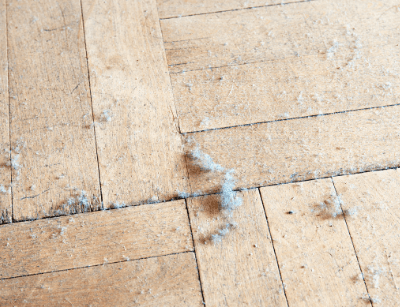Give Your Indoor Air Quality a Checkup In Celebration of National Wellness Month
August is National Wellness Month here in the U.S. - a whole month dedicated to self-care, stress management, and cultivating healthier habits. There’s no limit to what can be done, and the list of small changes and improvements will be a little different for everyone. But there’s hardly a better place for anyone to start than their home’s indoor air quality.
Although many people don’t realize it, the air inside any home may not be as clean and pure as it seems. A variety of factors can contribute to this loss of air quality, and at a certain point, it can become a threat to the health and well-being of everyone in the home. But awareness is half the battle, so read on to discover the dangers of poor indoor air quality and what causes it in the first place.
What Exactly Is Indoor Air Quality?
Indoor Air Quality (IAQ), as the name suggests, is the quality of air inside a building or structure. Put simply, low or poor air quality contains a high volume of airborne pollutants, while high-quality air contains little to no airborne pollutants. The IAQ of a building or space is particularly important for how it affects the comfort and health of the people who live or work inside it - though it can also have a bearing on manufacturing and food processing.
The IAQ is typically managed and controlled largely by the building’s HVAC system, especially in terms of ventilation and filtration, which help capture or remove pollutants from the air. The HVAC systems in many homes recycle the same air for greater efficiency, and without adequate ventilation, pollutants tend to build up inside over time.

The Most Common Indoor Air Pollutants To Watch Out For
Indoor air pollutants come from a wide variety of sources, some natural and some man-made. Some come from outdoor air seeping into the home through gaps or cracks, such as pollen, dust, pesticides, and outdoor pollution like vehicle emissions, smoke, and radon.
Other pollutants originate indoors, such as gases and particulate matter from fuel-burning appliances, household cleaners, personal care products (like hairspray), pet dander, and insulation materials. Carbon monoxide and asbestos are two particularly harmful and well-known household pollutants. Mold is also quite common, especially in humid climates.
Negative Health Repercussions of Poor Indoor Air Quality
Some pollutants are more dangerous than others, but it’s always best to minimize the presence of all pollutants, particularly since they can build to such high concentrations indoors. Poor IAQ can have both immediate and long-term effects on a person’s health.
The immediate effects can include headaches, nausea, dizziness, eye and throat irritation, and respiratory issues like coughing, sneezing, and difficulty breathing. The long-term effects can include serious respiratory diseases, heart disease, and even cancer.
This is why it’s important to keep the indoor air quality as high as possible by:
- Eliminating potential pollutant sources
- Improving ventilation
- Replacing the air filters on time
- Making sure the home has working carbon monoxide and radon detectors
- Getting the home inspected by an HVAC or IAQ specialist
About 4 Seasons Heating & Cooling
4 Seasons Heating & Cooling has provided outstanding service to Reno, NV for over 10 years. Their courteous licensed technicians are screened and drug-tested for the safety and comfort of every customer. They offer 24/7 emergency service, unbeatable warranties, and 2-year complimentary maintenance on new installations. Call now for indoor air quality services!


